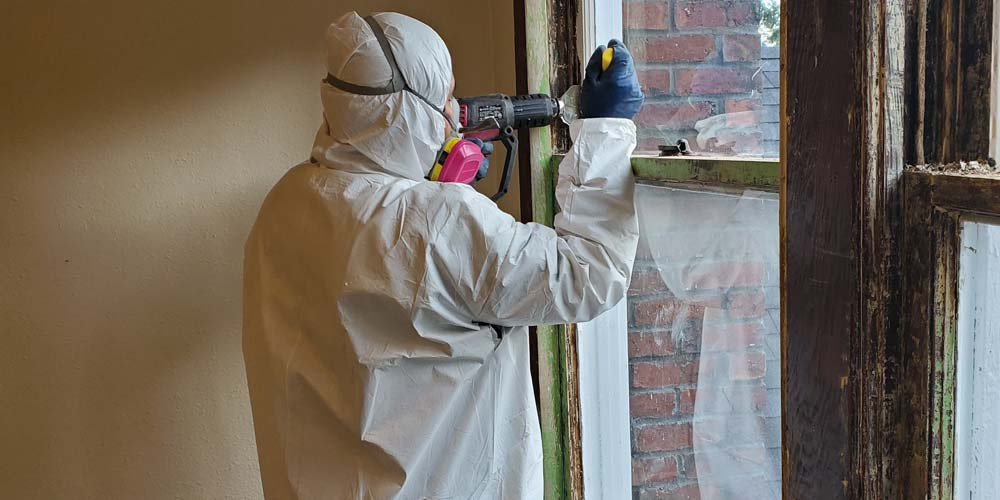Step-by-Step Refine for Effective Lead Infraction Removal
Following this, adherence to government and state laws is extremely important to formulating a reliable removal strategy. The real removal needs knowledgeable employees to implement these strategies while purely adhering to safety and security methods. What happens after the removal is finished?

Detection and Assessment
Detection and evaluation are important steps in the removal of lead violations. To guarantee an efficient removal process, it is essential to carry out an extensive examination of the environment where potential lead direct exposure exists.
When discovery is accomplished, a detailed analysis should be taken on. This includes assessing the level and severity of contamination, in addition to identifying populaces at threat, especially kids and expecting females. Threat assessments usually involve sampling and lab evaluation, environmental studies, and wellness effect studies. The collected data must be meticulously recorded to support the advancement of an effective remediation technique (Lead Violation Removal in NYC).
Additionally, it is imperative to focus on areas with the highest levels of contamination and those that posture the best health and wellness risks. Reliable communication with stakeholders, consisting of homeowner, citizens, and public health and wellness officials, is crucial for ensuring that all parties are notified concerning the findings and the subsequent steps needed for removal. This initial detection and assessment stage prepares for a successful lead violation remediation procedure.

Lawful and Regulatory Conformity
Browsing the landscape of lawful and governing conformity is a crucial facet of successful lead offense remediation. Compliance makes certain not only the safety and security of affected populaces yet likewise the integrity and legal standing of the organization accountable for remediation.
This entails careful paperwork of all remediation activities to show compliance. Failure to stick to these laws can result in severe fines, consisting of substantial penalties, legal action, and reputational damage.
Engaging legal experts focused on ecological legislation can facilitate navigating these intricacies. Regular training and certification for all workers associated with the removal process are likewise compulsory to make sure adherence to safety and governing standards. By focusing on legal and regulative conformity, organizations can properly mitigate risks and achieve an effective removal outcome.
Planning the Remediation
Successfully preparing the remediation of lead infractions starts with a complete analysis of the infected website. This initial evaluation needs to include an in-depth site examination to determine the level and focus of lead contamination. Comprehensive tasting and lab analysis are vital to produce a precise contamination profile. This data-driven strategy makes sure that remediation efforts are suitably targeted and reliable.
When the contamination is mapped, a danger evaluation need to be carried out to examine prospective wellness threats to people and the environment. Lead Violation Removal in NYC. This evaluation needs to take into consideration factors such as direct exposure pathways, populace vulnerability, and environmental influences. The insights collected will certainly develop the basis page for selecting a proper removal strategy
Consequently, setting clear, achievable purposes for the removal task is important. These purposes ought to align with regulative requirements and stakeholder expectations to ensure compliance and neighborhood acceptance. Developing a thorough removal strategy that outlines techniques, timelines, and resource appropriation will facilitate an organized method to the clean-up procedure.
Additionally, it is vital to engage with stakeholders early and maintain transparent communication throughout the planning phase. This consists of informing neighborhood communities, getting required authorizations, and coordinating with regulatory firms to guarantee all lawful and procedural demands are met. A well-crafted remediation plan not just attends to the contamination properly yet also builds depend on and cooperation among all events entailed.
Performing the Remediation
With a well-structured removal strategy in place, the emphasis moves to the real execution of the remediation activities. This phase entails setting in motion the essential sources, including knowledgeable employees, specialized tools, and high-quality products. Begin by clearly defining roles and obligations to guarantee responsibility and seamless control amongst employee.
This includes establishing up containment locations to protect against lead dust and debris from dispersing, as well as employing air purification systems to maintain air top quality. Use methods such as damp scraping, chemical stripping, or encapsulation, depending on the severity and location of the contamination.
Throughout the removal process, conduct regular assessments and air quality directory keeping an eye on to make sure compliance with governing criteria. Effective communication with stakeholders, including homeowner and passengers, is important to maintain them notified of development and any kind of unforeseen developments. By thoroughly following these actions, the remediation tasks can be performed effectively and successfully, inevitably mitigating lead dangers.
Post-Remediation Methods
Post-remediation strategies play an important function in making certain the long-term success of lead infraction remediation efforts. These methods encompass continuous monitoring, upkeep, and community education and learning to avoid future lead direct exposure and guarantee a hop over to here secure atmosphere.
First, regular tracking is necessary. This entails regular testing of the previously influenced locations to make sure that lead levels stay within risk-free limits. Residential property owners should establish a routine for these examinations, preferably in collaboration with certified ecological professionals.

Third, informing the neighborhood plays an essential role in maintaining the benefits of remediation. Locals and building managers should be educated regarding the threats of lead direct exposure and the very best methods for maintaining a lead-safe atmosphere. Workshops, informational handouts, and neighborhood conferences can be efficient tools for disseminating this information.
Final Thought
Successful lead violation removal requires an extensive, organized technique encompassing detection and assessment of contamination, adherence to legal and governing standards, meticulous preparation, and reliable execution of remediation efforts. Post-remediation techniques, consisting of continual tracking and community education and learning, are vital to sustain a lead-safe environment. Partnership with ecological professionals ensures continuous conformity and security of public wellness. This methodical procedure emphasizes the significance of thoroughness and caution in resolving and minimizing lead contamination.